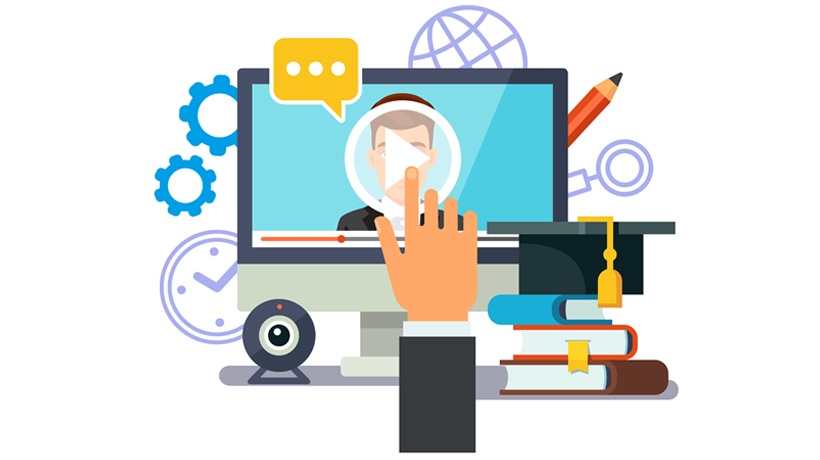eLearning Standards: Cases, Roadblocks, And Tips
Nowadays, dozens of different eLearning systems are available on the market. If each of them accepts only tailored content and isn’t interoperated with another software, it will be a killer for the entire sphere. That’s why the common standards appeared (SCORM, xAPI, cmi5, LTI) to save the eLearning domain from chaos. They determine how the content, authoring tools, and eLearning software should be created, delivered, and able to interact with the various platforms. As a result, these guidelines help reinforce, feature, or replace the eLearning platforms much faster and without unnecessary expenses. Typically, each standard addresses a particular issue. They don’t exclude each other, but I will describe a few cases that show you the differences between these approaches.
The eLearning Standards Through 4 Cases
Case 1
Sometimes, you can get disappointed with your current Learning Management System (LMS) or Learning Experience Platform (LXP). To make it possible to transfer your course to another platform, choose the SCORM standard. It allows you to create a compatible product. SCORM (Sharable Content Object Reference Model) was designed to solve the pain point of wasting time and money on delivering eLearning content across multiple products. This standard suggests a unified file format for moving the learning materials between different systems. Also, it allows you to blend content developed by various authoring tools or uploaded from diverse LMSs.
For example, you create an eLearning course and would like it to be able to work with any LXP or LMS. You should develop it as a SCORM package, usually a .zip archive with a set of files in a particular hierarchy. Eventually, this archive can be read by any SCORM-compliant product.
Case 2
To collect data and get useful statistics from your LXP or LMS, consider an xAPI standard. It can work in combination with either a cmi5 (I'll describe this standard in the next case) profile or another one. xAPI means "experience API," and it’s a new specification for transferring data about activities among different platforms. Many think that xAPI appeared to replace SCORM, but these standards have diverse goals and purposes. While SCORM is used to create and deliver content, xAPI serves to gather and store data.
For instance, learners are interacting with learning materials and each other everywhere—both online and offline. Thanks to xAPI, all their activities may be securely recorded and collected in the special storage named Learning Record Store (LRS). These reports can be shared with other LRSs (e.g., between your affiliate’s LRS and that of your headquarters).
Case 3
Imagine that you have chosen the xAPI. This standard is powerful and reliable, but it is too broad and a bit confusing when working with different LMSs. That’s why the more precise specification for xAPI was developed—cmi5 (computer-managed instruction, 5th attempt). Cmi5 is an xAPI profile that determines how an LMS provides data to an LRS. Cmi5 provides special XML metadata formatting rules that describe a course structure as a set of blocks and assignable units (AUs).
Case 4
To plug in the external tools in your eLearning product, choose the LTI standard that stands for "Learning Tools Interoperability" to bring benefit both to the consumer and the tool provider. As a consumer, you can connect your system with external platforms. You just open your LMS, then select and click a resource link to play the needed course. This external source will be seamlessly launched thanks to the special interoperability protocols.
As an LTI tool provider, you can plug in your own software in a third-party commercial product. You’re just required to send the platform administrator access data (URL or key). An admin uploads your data into the system, and your plug-in is then available for users.
What Roadblocks Will You Face Using These eLearning Standards?
As an earlier solution on the market, SCORM used to interact with many Flash courses. After the updated browsers stopped supporting the Flash programs, such SCORM courses became useless, so be aware of the technology behind your SCORM (it should be HTML5). One more drawback is that SCORM gives you limited tracking and reporting performance. There are only basic capabilities like assessment scores or time spent on learning. If you need deeper analysis and more precise data, this standard lacks such advantages.
Working with xAPI requires time to set up all metrics to benefit from the performance because xAPI gathers information from multiple learners’ activities. Some reports also serve only basic statistics. Cmi5 also creates more strict and specific limits for the big data sifting in comparison with general-purpose xAPI but it allows for a more seamless connection to a broader range of third-party BI platforms.
When choosing LTI, you have to know that it isn't supported by some Learning Management Systems (e.g., Google Classroom and Microsoft Teams). Also, an integrated tool can restrict UX in your LMS because a plug-in tool is usually opened in an iframe. And finally, LTI integrations don’t have access to users’ agenda in a vendor LMS—only the xAPI standard covers this option.
Conclusion
As you see, the emergence of unified eLearning standards resolves the significant issue with cross-platformin but this doesn’t relieve us of the need to research and compare different formats. Each standard fits specific educational and business needs. For example, LTI tends to be applied in academia and higher education, and SCORM is mostly used by corporations and government organizations.









